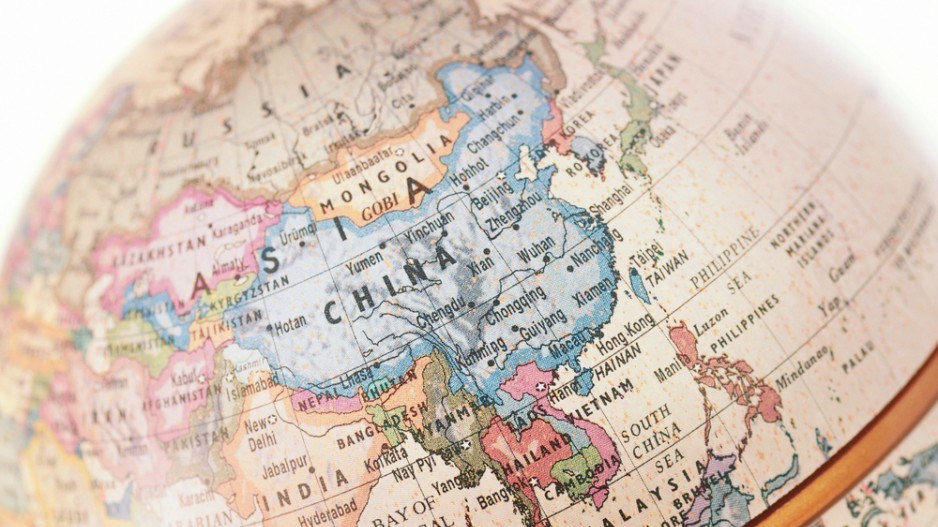Contrary to popular belief, Canada has been receiving less investment from Asian state-owned enterprises (SOEs) from countries like China in the past three years, a new report says.
The Asia Pacific Foundation of Canada’s Investment Monitor 2019 also revealed that while a significant portion of foreign direct investment (FDI), going to rural areas and smaller cities, most is still concentrated in one sector: oil and gas.
According to the report, the energy sector accounted for $82.3 billion in FDI from 2003 to 2018, close to double that of all other sectors combined. The automotive sector, a distant second in the rankings, attracted $13.9 billion during that same time.
Grace Jaramillo, interim program manager of trade, investment and innovation at the foundation, said the investment focus on energy contributed to an uneven spread of funds, even though 60% of all deals involved communities outside the three major centres of Vancouver, Calgary and Toronto. According to the report, about 98% of all investments made during the 15-year period were in only four provinces: Alberta, British Columbia, Ontario and Quebec.
“That is inevitable, I’m afraid,” Jaramillo said of small communities in energy-rich areas benefiting from FDI disproportionally compared with other towns. “If we learn from economic theory, these places will always be hubs of attraction, no matter how other small cities will try to attract and retain investment. Over the years, Canadian public policy has made huge efforts to staff and invest in agencies for investment attraction – and yet they haven’t had much success lately, mainly because investment will continue to go to those hubs.”
The energy sector, however, is also a prime example of the decline of Asian SOE investment in Canada since 2013. That was the year when the China National Offshore Oil Corp. (CNOOC) acquired Calgary-based Nexen, spurring Stephen Harper’s federal Conservative government to clamp down on SOEs owning Canadian companies with significant national interest.
Since then, Asian SOE investment in Canada has fallen to just 11% of all 333 deals signed between 2015 and 2018, according to the Investment Monitor report. That’s markedly lower than the 35% reported between 2011 and 2014.
Jaramillo said, “Most of the investments from SOEs, often through mergers and acquisitions, have been declining over the last four years, to the point where we are seeing way more investment from the private sector.”
She added that the nature of FDI has also changed with the shift to private firms, from M&As to “greenfield investments” that trigger more grassroots, bottom-up enterprises in smaller centres.
China, however, maintained its role as Canada’s largest source of FDI in the 15 years leading up to 2018, contributing $60 billion during that time. In addition, Hong Kong – a Chinese special administrative region – ranked third at $15.5 billion. Japan ($34.5 billion), Australia ($12.9 billion) and South Korea ($11 billion) rounded out the top five, although Southeast Asia would surpass all but China and Japan if counted as a single market ($16.6 billion).
The report also rebuts the idea that Canada receives more foreign investment than it makes. From 2015 to 2018, Canada received $51.2 billion in FDI but also invested $63.7 billion through 437 deals in the Asia-Pacific region, though Australia was the top target market.
“I think there’s nothing wrong with the early adopters of moving into Asia … looking to an area where they have more comfort, where the sense of risk is lessened because of shared values, shared institutions and shared languages,” said Jeff Reeves, Asia Pacific Foundation’s vice-president of research. “I don’t think it’s problematic, but it does speak to Canadian investors wanting to minimize risk. Perhaps the perception of risk is that markets like China and India are difficult to manage in the early stages.”
But Reeves said that’s why the foundation releases the Investment Monitor report regularly: to de-stigmatize Asia as an investment origin or destination, with the hope that, as Canadian firms become more Asia-competent, more investment flow will be established on those fronts.
“Understand that investment from Asia is very similar to investment from other parts of the world,” Reeves said. “What we are seeing – private sectors being more involved – is similar to what we are seeing in terms of investment trends from Europe and the United States. So while we tend to see Asia as a market with different characteristics and therefore a higher degree of risk than Canada, that understanding of the Asian portfolio is a little out of date.” •




